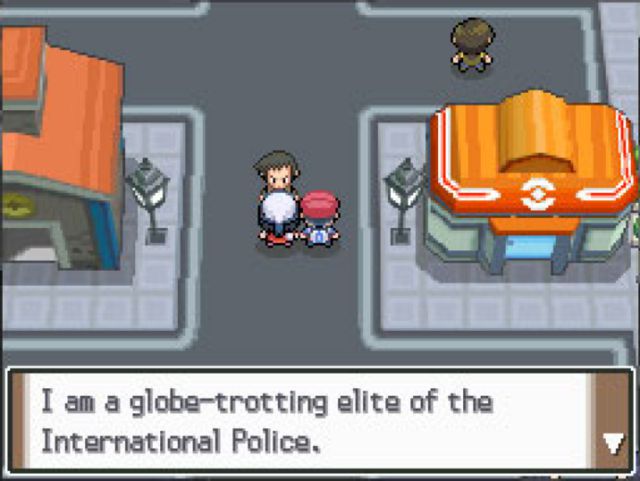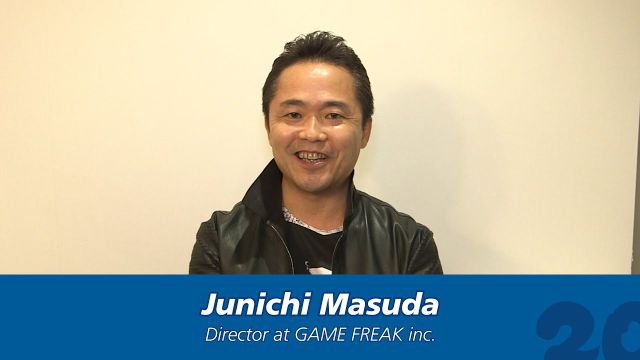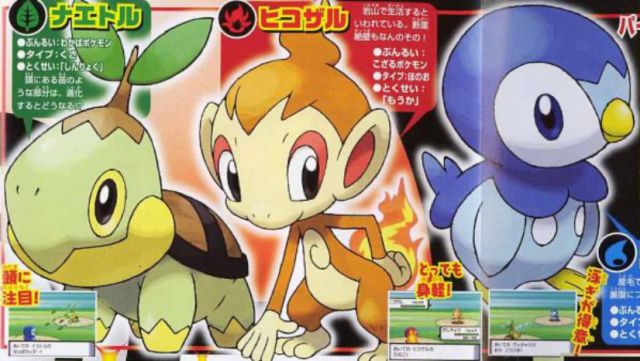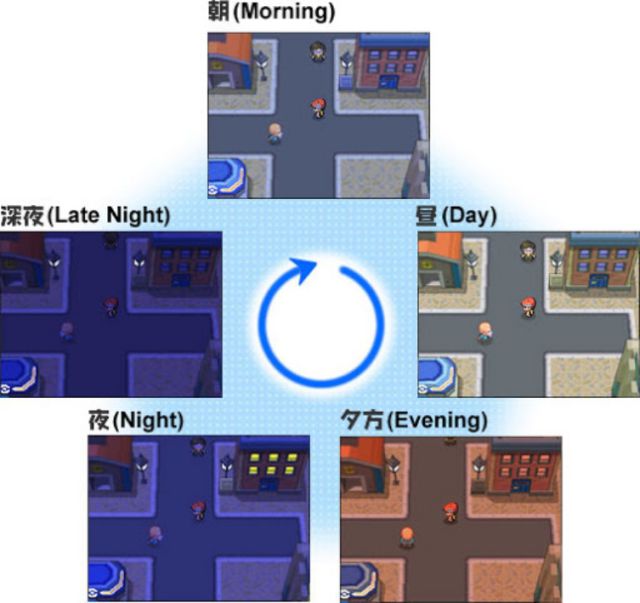
The fourth generation led the way to the modern series, started the dual-screen stage and established online communication. We remember Sinnoh.
2021 is not just any year for Pokémon. The license that Game Freak started celebrates its twenty-fifth anniversary on February 27 and, according to The Pokémon Company itself, it will be “very special”. In addition, September will mark the fifteenth anniversary of Pokémon Pearl and Diamond, the deliveries that kicked off not only the fourth generation, but also a way of understanding the saga from then on by integrating a second screen into the equation. The historical importance of these deliveries is superlative; especially since they charted the new path of what had been more than eleven years of concept.
If Red and Green, in 1996, spawned this phenomenon on the Game Boy, in 2006 it was Pearl and Diamond that consolidated the series for another few decades, due to aspects that we are going to comment on in this article. We are sorry to say that we have no information about eventual remakes, reimagines or simply the return of these editions. We are not going to speculate about that here. The intention of this essay is none other than to understand the role played by Pearl and Diamond in Pokémon, Nintendo and Game Freak. A review as respectful as possible around a generation worthy of study, marked by truly ambitious decisions and creative inspirations.
Sinnoh is the base on which everything was founded, the region that served as the cradle for Generation IV; possibly the generation that most established the maturity and playable depth of the formula as we know it today. Maturity on the plot level would come with Generation V. Time passes quickly, that time that Dialga controls in the lore of the saga, although we can talk about that at another time. This time we are going to focus on space, which curiously controls Palkia, his counterpart. So, let’s learn how Pokémon Pearl and Diamond were created.

The time machine: where the saga was
To understand the product you have to understand how it originated. Pokémon Pearl and Diamond will go on sale exclusively for Nintendo DS on September 28, 2006. As on previous (and future) occasions, both The Pokémon Company and Nintendo were aware of the commercial projection of the following new productions of the main series. So, for different reasons, the first canon Pokémon games on the dual-screen laptop took almost two years in Japan; more than that time in the rest of the markets. The reason? Mainly to be able to guarantee an installed user base that approximates the sales objectives to an amount according to the history of the saga and its potential.
We are talking about an event. Back then, the Internet was not what it is now, but it was much more than it was five or ten years before. Forums and access to information previously restricted to monthly video game magazines opened up endless possibilities to the general public, especially those of us who at the time went to school or high school. While some were testing the internal clock of the Pokémon Emerald (2005) cartridge on a Game Boy Advance, in the Asian country they were approaching Generation IV.

Nintendo DS made possible a small approach to 3D.
There is another reason, apart from the commercial, why Pokémon Pearl and Diamond were gestated over low heat: the series had to be perfected. Game Boy Advance was not as successful a console as the Game Boy family, where the Red / Green / Blue editions (Generation I) managed to ship more than 31 million copies; and Gold / Silver (Generation II) did the same with 23 million units worldwide. Rubí / Sapphire (Generation III) had to “settle” with 16.22 million. Was there cause for alarm? Not necessarily, but this is where the figure of Junichi Masuda comes in, a member of Game Freak since its inception, who would again assume the role of director after co-directing Pokémon Crystal (the expanded version of Gold and Silver for GBC) in 2000 and take the helm by himself in both Ruby / Sapphire in 2002 and Fire Red / Leaf Green in 2004 at GBA. The protagonists today would exceed that figure and would place 17.67 million copies.
It was his second big job at the premiere of a platform after receiving the blessing of Satoshi Tajiri, creator of the saga, years before. It was not worth launching one more delivery. It was not worth increasing only the number of creatures programmed in these new cartridges. Although Tsunekazu Ishihara, CEO of The Pokémon Company, assured in an interview with Famitsu in September 2006 that Pokémon Pearl and Diamond were going to be the “ultimate” games, the “definitive”, by adding the species of four generations in one (493 Pokémon), Masuda’s mind was more focused on finding the balance between quantity and quality. They both agreed on something: they had to be the best games of the series.

Junichi Masuda, greeting the public on the occasion of the 20th anniversary of Pokémon | The Pokémon Company, 2016
“I can also confidently say that even those who played the first versions, Red and Green, and those who are going to play Pokémon for the first time, will find themselves saying that these two titles are the“ definitive ”Pokémon games thus far. ”Ishihara commented just before the Japanese premiere of Perla y Diamante.
Junichi Masuda and the “Definitive” Pokémon Video Game Concept
It took several years for Junichi Masuda to be asked about the concept of a “definitive” Pokémon video game. It was in 2009, specifically in number 240 of the printed magazine Nintendo Power, on the occasion of the launch of Pokémon Platinum (the expanded version and Pearl and Diamond).
“I decided that ‘definitive’ was the main idea from the beginning”, when leading the development of Generation IV, began by recounting Masuda, also a composer in practically all of the main iterations together with his colleague Go Ichinose. “I set myself the task of getting them to be the definitive Pokémon games, and I started working on that idea as I developed them. When I asked myself what ‘ultimate’ was, I immediately realized that I wanted to improve the level of communication, which is a backbone of Pokémon games, “he reasoned.
Collection, exchange, combat. Three non-negotiable concepts in Pokémon DNA.

A few scans from Coro-Coro magazine uncovered the initials of the Sinnoh region before its official launch.
Masuda regretted that with Ruby and Sapphire it was only possible to exchange Pokémon for people around us, the ones we saw with our eyes, Cable Link through (or Wireless Connector, included in Fire Red / Leaf Green). The peripheral included in the Red and Green remakes, released in 2004 for the Game Boy Advance, made wireless communication possible; but it was insufficient. Internet, again, was going to become a colossus capable of breaking down the wall, this time, of space: Wi-Fi.
Nintendo DS came equipped with a wireless network connection, and that is how the Global Trade Station (GTS) was born, which for so many years accompanied the players; also to the players of the series at a competitive level. Because it was Perla and Diamante who sowed the seeds of the competitive scene as we know it. We will see later.
“That was my goal from the beginning: to create a network of users. I want players to be able to connect to the world. That’s the ultimate way to trade Pokémon. That was the goal ”, emphasized Masuda.
All this, being connected regardless of the space, was also what led to the theme of the mythology of this exciting region, Sinnoh, which was also the first to include a god in its catalog of creatures. More than ten years after the birth of the series, the figure of Arceus, the creator of everything, would appear; the basis on which everything else came. To give cohesion and coherence, in short, so that the three previous generations had a meaningful relationship between them and the fourth, the one that was about to begin. “The relationship between all these Pokémon is the key element. (…) I wanted Dialga [gobernante del espacio] and Palkia [bajo el control del tiempo] become counterparts to have a sense of balance ”.

Sinnoh, the Pearl, Diamond and Platinum region, is based in Hokkaido, Japan.
What does Junichi Masuda mean when he talks about “balance”
Interpreting Masuda’s words is not easy. Actually, when you play Pokémon Pearl and Diamond, you understand that there is a literal and a figurative background. He and his team wanted the Sinnoh region to be ruled by creatures that maintain balance (they even dedicated a species for antimatter, Giratina, which would later star in Pokémon Platinum and the World Warp), but also for both cartridges, as new video games of Pokémon, were works balanced in values such as accessibility, challenge, complexity and depth.
Nintendo DS was a start over for many of the company’s original portable console licenses. Reinvent yourself. Just like Mario, Donkey Kong and Zelda had to adapt from 2D to 3D in their day, Pokémon had to understand the dual screen and finally say goodbye to the limitations of the Game Boy and GBA. It would not be until 2013 when the jump to three dimensions would take place; But that is another story.
More memory meant more capacity and, at the same time, having to give up fewer things.

Different times of the day in Pokémon Pearl and Diamond | Critical Game Network
The context of Pearl and Diamond was particularly special. On the one hand, they had to be video games that responded to the demands of the most tallied, those who grew up with a Game Boy in their backpack. On the other, those who now received their first console and, for whatever reason, an edition of Pearl or Diamond. It was going to be the first Pokémon experience for many people. It was not a trivial subject. They could not be designed without contemplating this reality. The management work was going to be, if possible, even more important. “Things that fans are already familiar with can be confusing for new users, so we need to make sure the game is inclusive for everyone,” Masuda recounted in that same issue of Nintendo Power.
But Pokémon has never sought to be a very difficult experience. The personality of this creative is that of a calm type, who does not like problems. In video games, he has always sought a balance between everything, but had not achieved it. In a meeting with Gamasutra in 2009 he said it clearly: “I don’t like when things get too complicated”. That was taken into account when designing the difficulty curve of these installments, whose Pokémon League is curiously one of the most challenging, but this region was also one of the ones that best taught you how to grow as a coach thanks to the design of the adventure, based on retracing your steps on more than one occasion, looking for the best combination of types and exploring new evolutionary lines. They became, in their own right, the most complete Pokémon games to date.
The real leap from Generation III to Generation IV
Let’s move on to detail what were the key points in the passage from Generation III (Ruby / Sapphire / Emerald + Fire Red / Leaf Green) to Generation IV that was now beginning and why those changes were so well integrated into the structure previously raised in Hoenn. If natures and abilities were introduced in Ruby and Sapphire, here the figure rose by almost fifty more, giving a total of 123 unique abilities for Pokémon. These characteristics have a direct passive effect in or out of combat; from lowering the opponent’s attack when entering combat, to summoning a blizzard or dealing damage with types that have no effect on each other under normal conditions.
If we add to that the 113 new movements (a total of 467), the Pearl and Diamond turn-based combat system was going to become, by far, the most fun, the one that invited more experimentation; especially in double battles, where synergy is essential.
The return of the seasons (now also with dusk and midnight) governed by the internal clock of the console favored the ability to settle the will to give meaning to the recreated world, since there are creatures that only appeared in the wild depending on the time of day. Also, among the 107 new Pokémon included in Sinnoh, some like Magmortar or Electivire were evolutions of species started in previous generations. So much so that others like Munchlax or Mime Jr. appeared as pre-evolutions of Slorlax and Mr. Mime, respectively. Interconnected generations.

Showdown against Cynthia at the end of the Sinnoh Pokémon League. One of the toughest matches in the series.
Thus, going to kindergarten to breed Pokémon, worrying about their statistics and their genetics became increasingly common. The competitive scene was beginning to hatch and, little by little, the organized official tournaments gained strength; both in the United States and in Europe, where Spain had its first National VGC (Video Game Championship) in Madrid. The winners and first classified from each region would travel to San Diego, California, in August 2009. The Perla and Diamante cartridges ceased to be a unique experience shared with our environment to adopt a global position. The Pokémon experience was no longer ending at your neighborhood meeting point.
A final aspect to highlight is the region itself, Sinnoh, which of all those based on Japanese territories (Kanto, Johto, Hoenn and this), was the most dense and rich in ecosystems. Variety of areas, routes, caves, lakes, cliffs, hiding places … Everything felt balanced, with great supporting characters, some Gym leaders to remember and a person, Cynthia, who placed the female figure in the saga to another level. There was a problem in these installments that we cannot forget either, and that is how he interpreted the general rhythm of the adventure, somewhat slower and more leisurely than it had been the norm. All in all, with their strengths and weaknesses, Perla and Diamante sealed the name of the series embracing success with a couple of installments that did not revolutionize the formula, but rather perfected it, giving rise to a new future that we would know years later.
Speaking to FreeGameTips, at the end of 2016, on the occasion of the premiere of Pokémon Sun and Moon for Nintendo 3DS, Masuda spoke some words that fit perfectly with the unbreakable will of the Pocket Monsters: “For us, Pokémon is a social phenomenon , a communication tool; then, with the technology that we have at all times, we will assess how to make it the best communication tool through these Pokémon consoles ”.
On February 27, 2021, it will be 25 years since the birth of this communication tool.
References | Video Games Blogger; Nintendo Power (via Lava Cut Content); Gamasutra

